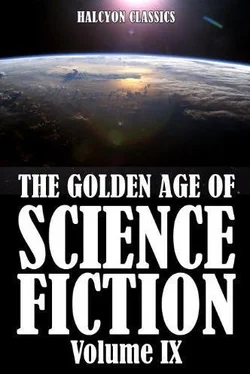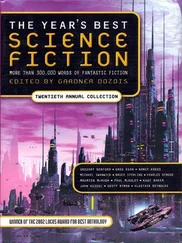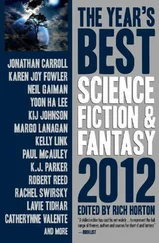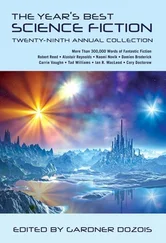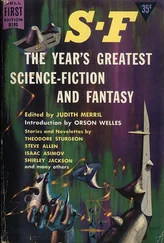“Yes, that is so,” I said; “and we can see all those things now because there is no atmosphere. No doubt you have noticed that on the earth the sun appeared red when low down in the sky, and during a fog it appeared redder and duskier still.”
“Oh yes, I’ve often noticed that,” he answered.
“That was caused by our atmosphere which, when thick, absorbs all but the red rays of light. On a clear day the sun appears an extremely pale yellow, or very nearly white; still the atmosphere absorbs some of the light rays, so we cannot see its true colour as we do now. Those coloured fringes round the edges can only be seen from the earth by the aid of a special instrument, and then they do not show all their true colours.
“That pearly light all round the sun, and the long streamers that give it the appearance of an enormous star with six long points, form what is termed the solar corona, and this can only be seen from our earth during the very few minutes when an eclipse of the sun is at its totality. It is to see the corona and other surroundings of the sun, in order to study them, that astronomers go such very long distances—often thousands of miles—when there is a total eclipse expected, and not merely to see the eclipse itself. They hope, in time, to learn much from such observations; but if it happens that the sky is over-clouded during the period of total eclipse, then all their expense, and the time spent in preparations and rehearsals of their procedure, are, unfortunately, entirely wasted.
“Now, M’Allister, if you will take my glass you will be able to look at the sun and examine it without any risk to your eyesight, for it is provided with a dark glass to shut out all the dangerous glare. You will then see what the fringes and inner and outer coronas really are like.”
He took the glass and looked for a long time at the sun, and, judging from his exclamations of surprise and astonishment, he was extremely interested and delighted with what he saw. John was also examining it at the same time through his own glass.
Presently the latter turned to me saying, “Professor, I no longer wonder that astronomers are prepared to travel long distances, and to risk a great deal of discomfort, and even hardship, in order to view and study the sun’s surroundings. Of course to them it is not merely a sight to be seen, but the only means by which they can acquire a knowledge of solar physics. Merely as a sight, however, it is most wonderful. At many places all round the edge of the sun’s disc I can see what look like coloured flames—pink, pea-green, carmine, orange, or yellow, all in incessant movement—shooting out at times, or waving and shimmering in a manner that is indescribable. The changes in form and colour are as sudden, yet as definite, as the changes produced by turning a kaleidoscope; while the intermingling of the various colours frequently produces an effect which I can only compare to the iridescent colours on mother o’ pearl. Then all around and beyond the coloured fringe there is the light of the pearly inner corona; beyond that are pearly and violet-tinged rays curling away in both directions from the poles, whilst outside all are the long, pearly, and violet-tinted streamers which assume the shape of a large many-pointed star; and even these do not seem at rest. Though astronomers cannot see all that we do now, there must be sufficient visible to them to afford opportunity for a most interesting study.”
“That is indeed the case, John,” I replied. “Those coloured flames, for instance, form a study in themselves, which some observers make their particular hobby. As seen from the earth, they all appear some tint of red; and, normally, according to measurements, they seem to extend a distance of some 20,000 miles above the sun. They shift their position very rapidly indeed; movements at the rate of 100 miles a second are quite moderate compared with some which have been noted, yet one can scarcely realise such rapidity of motion. Frequently, however, these flames are seen to rise in immense masses to tremendous heights above the sun’s surface, evidently driven upwards by explosions of the most intense energy. In 1888, for instance, one was observed which, in the course of two hours, rose to a height of 350,000 miles before it broke up; that is, at the rate of 50 miles a second all the time; but, as the force would become less and less as the distance increased, at the earlier part of the time the movement must have been far more rapid. When the impetus derived from the explosive force is quite exhausted, the top part of the mass of flame often spreads out like the top of a tree, then breaks up and falls back into the sun in large flakes of flame.
“It is supposed that these violent explosions are the cause of the spots we so often see on the sun when observing it with our telescopes; and, when looking at them in their earliest stage, we are probably looking at a mass of flame end on, instead of seeing it in profile, as is the case when the explosion occurs near the edge of the disc. The flames, as examined by the spectroscope, appear to be largely composed of hydrogen gas; and no doubt many other gases—some quite unknown to us—enter into their composition. They are termed flames, but are more probably immense volumes of incandescent gases. The corona itself is never seen twice alike; its shape and size vary at every eclipse, but the variation runs in a regular cycle from maximum to minimum.
“You will also observe that all around the corona, and extending a vast distance beyond it on both sides, is a fainter pearly light. This is what is termed the zodiacal light, and is believed to be the thinner portion of the sun’s atmosphere. We can see it from the earth occasionally after the sun has set, extending far up into the sky in the form of a semi-ellipse, the base of which is over the place where the sun is.”
M’Allister here asked me to tell him “What was supposed to be the actual size of our sun, and how far it was away from the earth?”
I answered that “The sun is about 865,000 miles in diameter; and that he would have some idea of what an immense body it is if he remembered that it would require 64,000,000 globes the size of the moon to make one globe the size of the sun! Yet, notwithstanding this immense size, our sun is quite a small body as compared with some of the fixed stars, which, as perhaps you may know, are really suns at an inconceivable distance from us. The bright star Sirius, which is visible during our winter time, is not only very much brighter in reality than our sun, but must be many times larger; and there are others known to be very much larger than Sirius. It has been computed that Arcturus is in mass 500,000 times as large as our sun!
“The sun revolves on its axis in a little over twenty-five days, but the exact period of its revolution is difficult to determine. The mean distance of the sun from the earth is about 92,800,000 miles. When we are farthest from it its distance is 94,600,000 miles, and when nearest, 91,000,000 miles—these differences, of course, arising from the eccentricity of the earth’s orbit.
“The sun’s density is only about one-fifth of the earth’s density; so it is evidently mainly gaseous—at all events in the outer envelopes.
“The spots upon the sun often cover such an immense area, that if our earth were dropped into the cavity, it would be like placing a pea in a teacup! Some of the spots entirely close up in a short time, but others last for weeks.”
We now turned from the sun and looked at the stars. Such a multitude were visible as we had never seen from the earth; for small stars, which there required a telescope to bring them into view, could now be plainly seen without any such aid, and their various colours were seen much more clearly. They all shone with a clear and steady light; the twinkling and scintillation of the stars, as seen from the earth, being caused by the vibrations and movements in our own atmosphere. We also saw many nebulæ without using a glass.
Читать дальше
